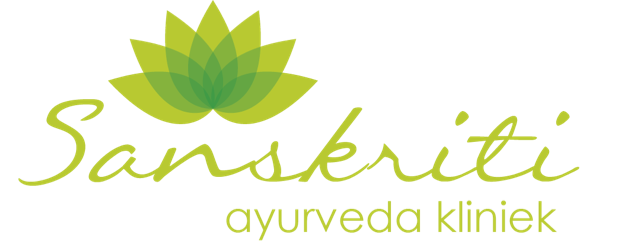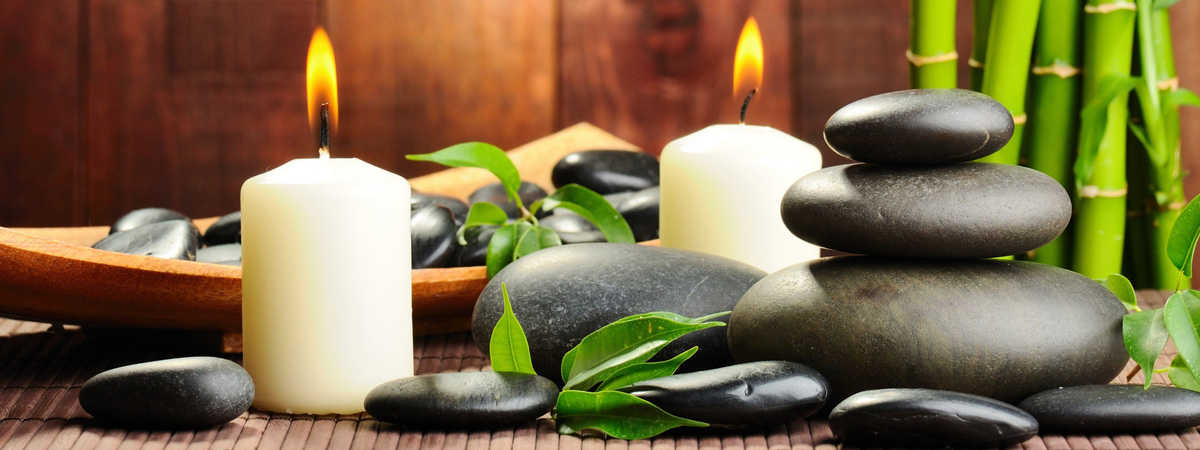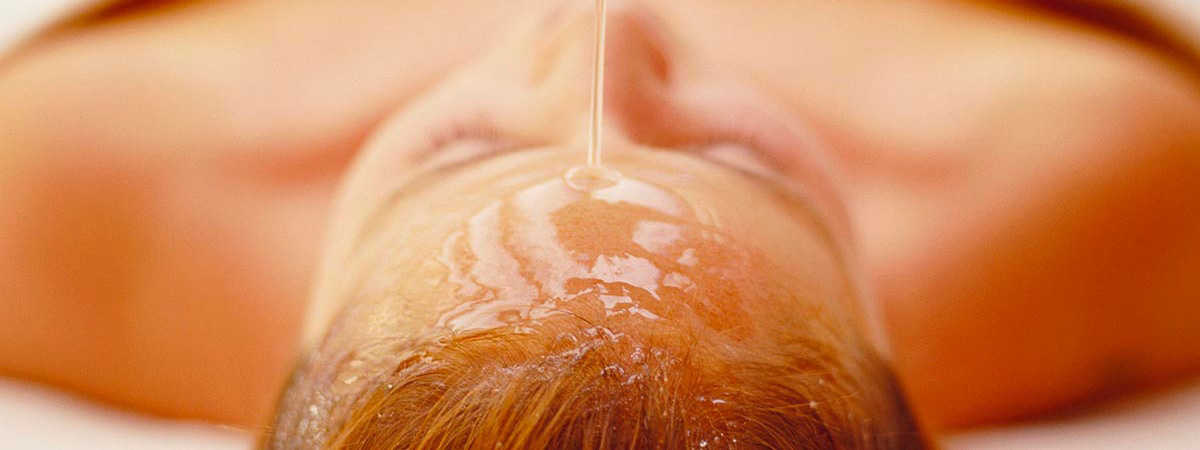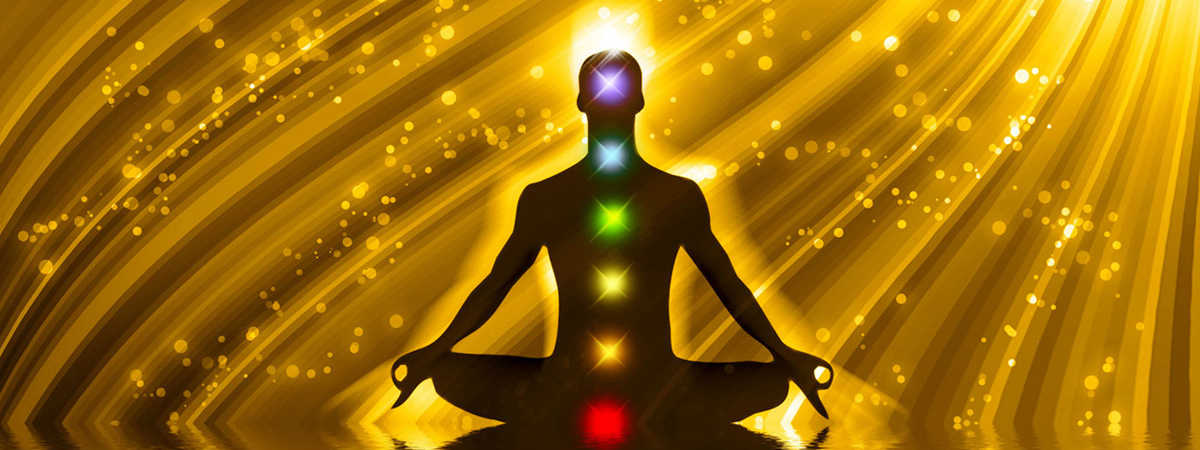Vaman (therapeutic vomiting)
Vaman or emesis is the procedure of eliminating the impurities from the upper part of the body. It is indicated specially for Kapha related disorders.
Concept
Vomiting is induced with herbal emetic substances for the purpose of eliminating vitiated Kapha and Pitta. Herb induced vomiting is of fundamental importance to the entire scheme of Panchakarma. Unripe Pitta and Kapha can be eliminated by medicinal emesis.
How is Vaman done
Pre-operative (Purvkarma) - depends on aggravations of doshas Vaman is started with 3 to 5 day internal Snehan (oral intake of medicinal oil or ghee in incremental quantities ranging 30 to 150 ml) followed by external Snehan (full body massage) and/or Swedan (application of hot steam).
Vaman is performed preferably early in the morning after motion has been passed. 3 to 4 glasses of medicinal drinks are administered orally and vomiting is stimulated by rubbing the tongue as this stimulates the vomiting centre of the brain.
How does it work
The oral intake of medicinal oil or ghee helps to loosens up the vitiated doshas and the massage strokes helps the far seated doshas to be directed towards the abdominal and thereby facilitating early elimination through the oral cavity.
Benefits
Elimination of excessive Kapha that is build up in the body.
Improve the strength and immunity of the body.
Improve the metabolic balance of the body.
Congestion, suffocation, fullness and dullness disappear and the pores in the body will open and become clear.
Recommended for
Highly recommended in Kapha disorders
Highly recommended in Psoriasis
Upper respiratory tract infection
Asthma
Common cold
Skin disorders
Chronic cough
Digestive disturbance like acid peptic disease (amla pitta)
Tendency of indigestion (agni mandya)
Type of jaundice (ruthpath kamala)
Rhinitis
Tonsillitis
Obesity
Psychological conditions like feeling of saturated, vagueness, dizziness, anxiety, obsessive- compulsive disorder, disturbed sleep and nightmares
Contra-indications
Pregnancy
Elderly age
Impaired immunity
Virechan (therapeutic purification)
Downward elimination of vitiated doshas or waste products is known as Virechan. It literally means clinically induction of purgation. Purgation is simply clinically induced loose motions.
It is the cleansing of the Pitta and the purification of the blood toxins from the body that are accumulated in the liver and gall bladder, it completely cleanses the gastrointestinal tract.
How is Virechan done
Virechan starts with preparatory procedure, it includes oleation, both internal (oral intake of ghee or oil) and external (massages), and fomentation (application of hot steam), followed by intake of the medicine of choice for Virechan.
How does it work
The oral intake of medicinal ghee or oil helps to loosens up the vitiated doshas and the strokes of massages helps the far seated doshas to be directed towards the abdomen. The aim of the treatment is to stimulate vitiated doshas from the stomach, small intestine, liver and gall bladder, and bring them to the gastrointestinal tract for their eventual expulsion from the body through the rectum.
Benefits
The elimination of excessive Pitta from the body.
This process not only eliminates diseases of Pitta and blood but it helps to rejuvenate all the tissues and organs in the abdomen.
Improves skin complexion
Gives longevity and increases immunity
Improves the digestive system
Recommended for
Various skin diseases
Chronic fever
Enlargement of liver and spleen
Thyroid disorder
Intestine parasites
Anaemia
Severe pain in head
Burning of eyes, redness of the eyes
Various discolouration of skin
Glandular swelling
Asthma
Cough
Jaundice
Epilepsy
Arthritis
Paralysis
Hyperacidity
Contra-indications
Old and weak patients
Children
In pregnancy and immediately after delivery
Persons who have developed fissures in the anus or bleeding per rectum
Ulcers of small and large intestine
Prolapse of the rectum
Diarrhoea
Dysentery
Basti (enema treatment)
Basti means urinary bladder. In ancient days, physicians were using the urinary bladders of sheep, cows or buffaloes for giving medicinal enema, hence the name.
Basti can be given with many different combinations of herbs and other substances like oil, milk, honey, salt, meat, herbal paste etc. The effect of Basti is different with different combinations of herbs and substances.
Basti is the main treatment for Vata disorders. However, it is also useful for diseases of Pitta and Kapha as well as for vitiation of doshas together or the vitiation of blood. Vata is the only motivating force in the body, which is responsible for spreading doshas in all these tracts. Vata is also responsible for transportation of sweat, urine, faeces, etc. And Basti is the main treatment, which can control Vata.
There are three main types of basti:
Anuvasana Basti or Sneh Basti
It's performed with only medicinal oil or ghee. The word Anuvasana means that which remains inside (vasa) the body for long time (anu) without causing any harm.
This can also be given daily (anudina) without any side effects hence it is called as Anuvasana.
Anuvasana is usually used for tonification and for reducing Vata.
How is Anuvasna or Sneh basti done
Like all other Panchakarma, the patient should follow the Purvkarma (preparatory procedure). A gentle massage is followed by light steam application all over the body (especially the lower part of the body), and a proper diet. After a few days of Purvkarma, a physician should carry out a proper examination of the patient. The actual procedure is the application of medicinal warm oil through the rectum (anal cavity) with the help of a Basti instrument (small rubber tube).
How does it work
Anuvasana or Sneh Basti helps the lubrication and nourishment of the stomach and intestinal tract, cleanses the colon, and rejuvenating the colon function.
Benefits
Vata dosha is brought under proper control, all other aggravated doshas and waste products are removed and hence all the tissues are properly developed.
Person remains healthy and resistance to diseases improves.
Strength, agni (digestive fire) and cognitive capability are increased.
The complexion of the skin and voice improves.
Recommended for
Highly recommended in all Vata disorders like arthritis, paralysis.
Joint and muscular pain
Constipation
Dryness of the body and very strong digestive fire
Oleation and nutrition
Contra-indications
Diarrhoea
Rectal bleeding
Several anaemia
Newly developed fever
Jaundice
Piles
Niruh or Asathapana Basti
Niruh or Asathapana Basti is a concoction or cleansing enema, usually using herb extracts as main ingredients. The word “Niruh” means: “whose benefit is great”. “Niruh” usually means: “Purification”.
How to apply Niruh Basti
After sufficient Purvkarma, such as full body massages followed by steam application and proper dieting, the patient is ready for Niruh Basti. After proper physical examination by a doctor, a warm medicinal concoction is applied through the rectum with the help of catheter or Basti instrument.
How does Niruh Basti work
The active ingredient of the concoction absorbs in the colon which helps to loosen toxins from the colon and helps easily elimination of the toxins.
Benefits
Increase in appetite
Clears the bowels
Increase the strength of the bowels
Decreases constipation
Decreases hyperactivity
Recommended for
This is especially recommended for Vata diseases when it is vitiated due to the obstruction in the channels, such as:
Pain in abdomen, chest, pelvic region, eye, ear or legs
Headache
Cardiac pain
Hemiplegia
Facial paralysis
Constipation
Obstruction in urination
Worms
Stiffness in the body
Fistula
Joint diseases
Stiffness in the back and hips
Problems with lactation
Tremors (of the limbs)
Loss of strength in the body
Gout
Contra-indications
Patients who have received too much oleation
Severe loss of appetite
Patient who is tired due to long travel
Hunger and thirst
Diarrhoea
Old and weak people
Toxins in the intestines
Vomiting
Uttarbasti
This Basti is usually given for urinary and reproductive system related diseases. Uttarbasti is an important Panchakarma procedure for genitourinary disorders (term used to indicate the organs of the reproductive system and the urinary system) of both males and females. The therapy involves administration of a specific medicinal oil, ghee or a concoction into the urinary bladder or uterus.
It is a highly recommended treatment for infertility and uterus related diseases.
Application of Uttarbasti
After proper Purvkarma like proper diet and full body massages with medicinal oil or ghee and hot steam application, a herbal concoction is introduce into the intrauterine cavity or up to the cervix in the case of a female and into the bladder in the case of a male.
Benefits
Regularising hormonal circulation
Increased conception rates
Maintain a healthy PH in the uterus and fallopian tubes
Good quality and healthy sperm production
Sexual power increases
Aging decreases
Recommended for females for
Fallopian tube blockage
Uterine fibroid
Endometriosis
Female Infertility
Cervical polyp
Recommended for males for
Urinary incontinence
Prostate enlargement
Cystitis
Neurogenic bladder dysfunction
Male infertility
Diseases of urinary system
Contra-indications
Pregnancy
Weak people
Old age
How does Basti work
The effect of Basti is different with different combinations of herbs and substances. It helps to get rid of all vitiated doshas so it can be used for: improving health, reducing obesity, purification, increasing health stability, improving skin complexion, etc.
Benefits of Basti
Vata dosha is brought under proper control, all other aggravated doshas and waste products are removed and hence all tissues are properly developed.
The patient remains healthy, reducing susceptibility to diseases.
Strength, agni, and mental state are increased.
The complexion of the skin and voice is improved.
Nasya (the nasal instillation of medicines)
Nasya means administering herbal oils, medicinal ghee, juices or powders through the nasal route. It is specifically design for ENT (ear, nose, throat) disorders.
How is Nasya done
It begins with a facial massage with a tailored (depends upon per person) herbal oil, followed by localized steam application, and concluded with administering a few drops of herbal oils, medicinal ghee, juices or powders through the nose.
How does it work
According to Ayurveda the nasal cavity is the opening to the brain. That's why medicinal oils, ghee, juices and powders are given through the nose to stimulate the vital centre of the brain to overcome specific diseases.
These medicines enters the blood circulation, which is present in and around the nose. It clears the mucous blockage around the area and cleans the sinus, thereby improving the sense of smell.
Benefits
Cleanses the nasal cavity, purifies and strengthens the nasal passages.
Allows to breathe fully and easily again.
Regular use can prevent diseases of ear, nose, throat and head.
Prevents hair loss and baldness, and can improve the quality of the hair
Controls all doshas in the region of the head as well as all the centres of sense organs and motor organs situated in the head
Recommended for
Highly recommended in all types of allergies
Sinusitis
Headaches
Migraine
Hair loss
Premature greying of hair
Rhinitis
Cervical spondylosis (also known as neck arthritis)
Stress
Other nasal disorders
Facial paralysis
Hemiplegia
Aphasia







